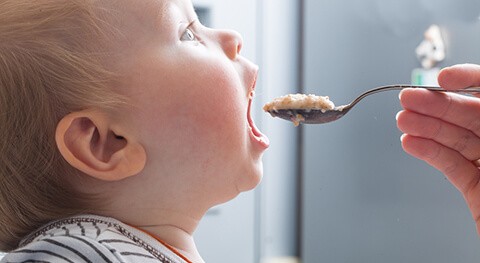Introducing Solids: New Textures
From soft purees to lumpier textures and finger foods, let your baby explore the world of food at their own pace.
Most babies are ready to start eating at around six months, and are usually offered soft purees as their first taste of solid food. It is an exciting time for parents and bubs.There are no rules about which order foods should be introduced. Instead, try to offer your baby a wide variety of whole foods, fruits and vegetables – from classic pureed fruits and vegetables, to cooked grains and slivers of soft cooked meat.
Try different tastes and textures
Babies are adventurous eaters. Most are willing to try new flavours in their first few months of eating – the more tastes and textures you offer in these early days, the more likely she is to develop healthy eating habits. Babies naturally prefer sweet foods, so letting her taste bitter vegetables early on will help her to develop a broader palate. Research shows that waiting beyond nine months to introduce lumpier textures can lead to food aversions, so if you do start with purees it is important to advance to lumpier consistencies and then finger foods of different textures and sizes once your child is comfortable.
Follow your baby’s cues
Foods to avoid
There are a few foods that should be completely avoided during your baby’s first year. These include:
- Honey due to the risk of botulism
- Whole cows’ milk is not recommended as a main drink in infants under 12 months of age as it can lead to iron deficiency
- Excess sodium
- Small foods that pose a choking risk
Also avoid or limit juice, soft drinks and caffeinated beverages, artificial sweeteners, additives and preservatives for children of all ages.

